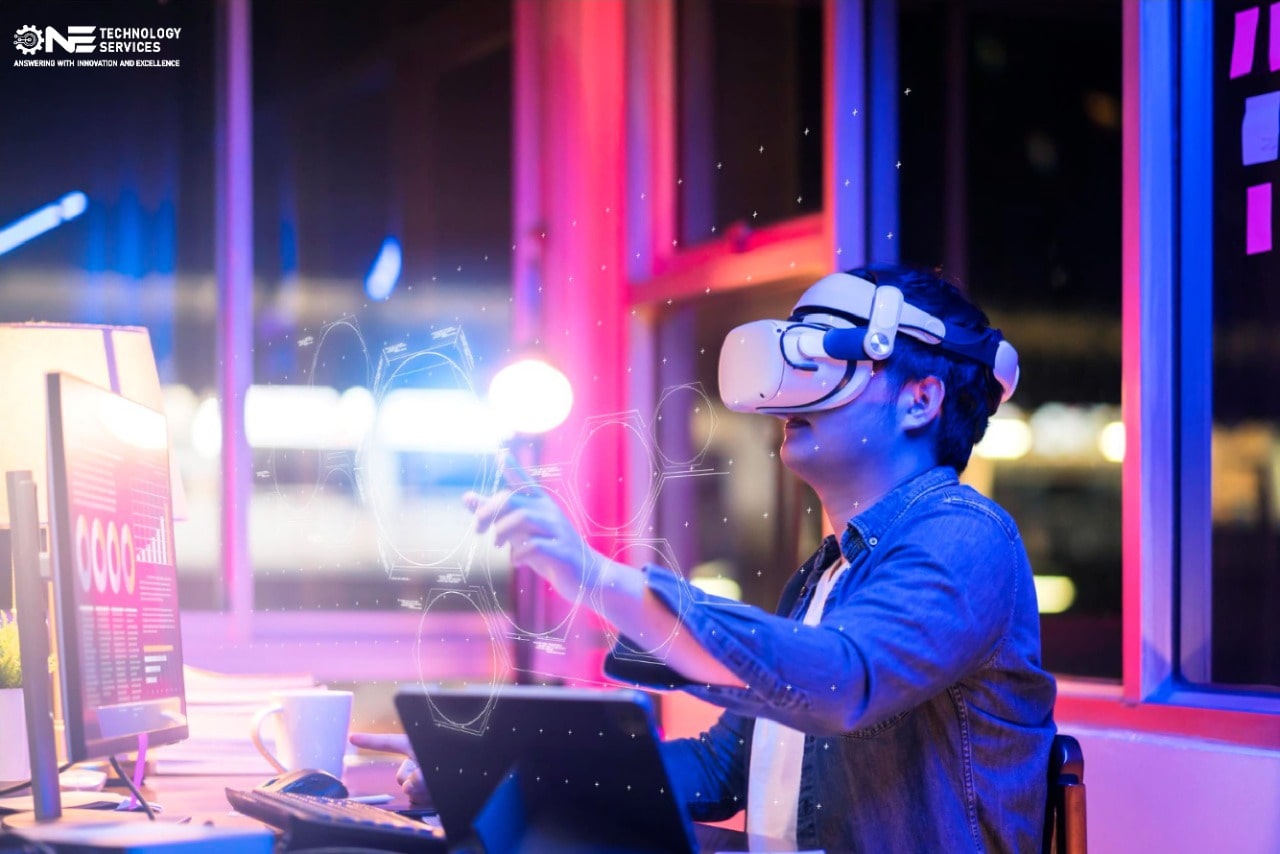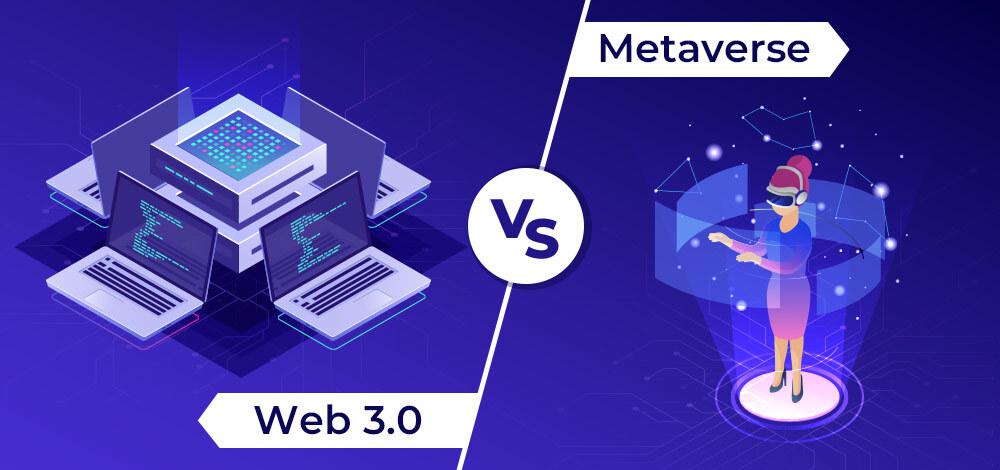If you are tech-savvy, web 3 and metaverse are your cup of tea. In addition to this, if internet users or netizens are knowledgeable about the future of the internet, they are aware of Metaverse and Web 3.0. Social media platforms like Facebook, YouTube, Twitter, and Instagram were all over these two words.
The future of connectivity would be significantly and permanently impacted by both ideas. It is crucial to consider the variations and implications for the end of the tech universe as a result. It turns out that while having certain connections, Meta and Web3 specify various approaches that are distinct from one another.
Two almighty words or terms, Web3 and the metaverse are creating buzz and a surge of enthusiasm in the business and finance worlds. People often confuse these two terms as interchangeable but these two terms are way too different. In addition to this, the tech world is drastically shifting from the previous version i.e. Web 2.0 to Web 3.0 which experts believe is undoubted, a worthy shift.
Talking about the metaverse, currently, many people held the opinion that the metaverse was nothing more than a sci-fi and technology nerds’ pipe dream. However, since the pandemic, a move toward digital contact and the development of customers who are digital natives have caused experts to believe that the metaverse will be the next significant change in computing.
Sometimes the anticipation of a new technology’s expected impact exceeds its actual readiness for widespread adoption in a society where the hype is continual. And, to some extent, the metaverse is also no different.
When we are looking at people and the experts pinning and talking about these two terms, the world still is unclear about these two terminologies. These two technologies are themselves so deep that getting a clear concept about them would be like catching light in the bottle. You might have heard people asking, ” what are metaverse and web 3.0? ” or “difference between metaverse and web 3”, these are some of the many queries people want to get answered for. This article is is a brief understanding of the metaverse and web 3.0. Let’s get started.
What are Metaverse and Web 3.0?
What exactly is Web3.0? The third generation of web technologies is known as Web 3.0 (Web3). It is a picture of an open, decentralized Web 3.0, the following stage in the development of the web and the internet, which has the potential to be just as disruptive and to usher in a significant paradigm shift as Web 2.0 did. The fundamental ideas of decentralization, openness and increased consumer usefulness form the foundation of Web 3.0.
The Semantic Web as it was originally imagined by Berners-Lee in 2001 has significantly evolved with the advent of Web 3.0. This is partially due to the fact that Web 2.0 has advanced much over the previous 20 years and that doing so would be extremely expensive and monumentally difficult given all the numerous subtleties and variances in human language.
Whereas, the metaverse is itself a virtual world. It is the one space that effectively took over the place called ” cyberspace”. The goal of the metaverse is to “redefine how the universe works, runs and interacts” through a “spectrum of digitally enhanced worlds, realities, and economic structures.” The founder of Meta, Mark Zuckerberg, did not originally use the phrase “metaverse.” The fusion of virtually augmented physical reality and digital reality gave rise to the metaverse, a shared virtual realm independent of hardware and software vendors. It has a separate virtual economy that operates independently and is supported by digital money and non-fungible tokens (NFTs).
Difference Between Metaverse and Web 3.0
It’s crucial to understand that Web3 and the metaverse are not the same things. Rather, the metaverse will be constructed using components of Web3, such as the blockchain and NFTs. When everything is finished, it “would be a type of online playground where users might join pals to play a multiplayer game like Epic’s “Fortnight,” watch a movie on Netflix the next, and so on.”
They differ in the following ways:
- Decentralized vs Shared Digital Reality: In Web3, users and the community will have decentralized ownership and control over the web. On the other hand, the metaverse is a shared digital environment that allows people to communicate with one another, create economies, and engage in real-time interaction without regard to ownership.
- Infrastructural variance: While the metaverse makes use of AR/VR, digital money, and blockchain, Web3 is also built on these same technologies. This is because Web3 is decentralized and lacks significant corporate control or influence.
- Usage: The ways in which the two are applied also vary. New internet usage and regulation guidelines called Web3 have been developed. The metaverse is all about interactive media, social networking, shopping, and other experiences.
- Portraits: The portraits of Metaverse and Web 3.0, of course, are the most important point of comparison. You can interact with 3D friends, objects, and locations in the metaverse. For instance, you and your friends can play games on the creator’s property. With Web3, individuals may create, own, sell, and buy their own content. Users can also charge for their creations.
What Do These Two Terms Share In Common?
Where these two technologies share some differences, they also have some traits in common which make them both interchangeable most of the time.
Web3 is intrinsically linked to the metaverse. Even though Web3 is still frequently described as being decentralized, the metaverse will continue to exist in surface and deep webs; nonetheless, the metaverse will continue to be centralized in terms of social media controlling platforms. Both are constructed using cutting-edge technologies that will advance. The semantic web connects the metaverse and Web3 together. The development of a complex user interface will be largely dependent on AI, which is yet another important element of both technologies.
Future of Metaverse and Web 3.0
The crucial question is: How will Metaverse and Web 3.0work together in the future? Web3 is an improvement above Web2.0 and permits online activities, whereas the metaverse predicts a time in the future when computers will allow people to interact with the digital world.
While the bulk of metaverse in use today is gaming hubs with a young demographic, if the idea gains traction as supporters hope, it may alter how we all work, socialize, and communicate online. You could don a VR headset and communicate with your coworkers virtually, all from the comfort of your living room, rather than using a video conferencing service like Zoom or Google Meet.
In addition to this, the digital artist soon be able to create a costume for an avatar to use in the metaverse and then offer it for auction alongside an NFT. By doing so, the costume would become the buyer’s exclusive property; if someone else copied it, their avatars would be donning a knockoff. A Web 3.0 that we access through desktops and mobile devices rather than VR headsets is another possibility.
On the other side, the Metaverse’s creator economy can complement Web 3.0’s ambition by creating an entirely new financial system through the use of decentralized solutions.
We must think carefully about the type of internet we want to emphasize in the Metaverse as we transition to decentralized Web 3.0. Since the Metaverse is all about the fusion of the virtual and real worlds, it is crucial to establish an open-source, interoperable public chain so that various virtual worlds can connect with one another, transfer resources between them, and seamlessly overlap one another.
Wrapping up
Making Metaverse a reality requires the contribution of web 3.0, especially if blockchain technology is used. In other words, web3 will make it possible for the virtual world to be accessible via a web browser while also existing online. Despite the recent exponential growth of NFTs, P2E games, and DAOs, Web 3.0 is still far from being fully developed, and there is still much room for technological advancement that will enable a fully immersive metaverse experience.
I hope this article will be of great help to you.

